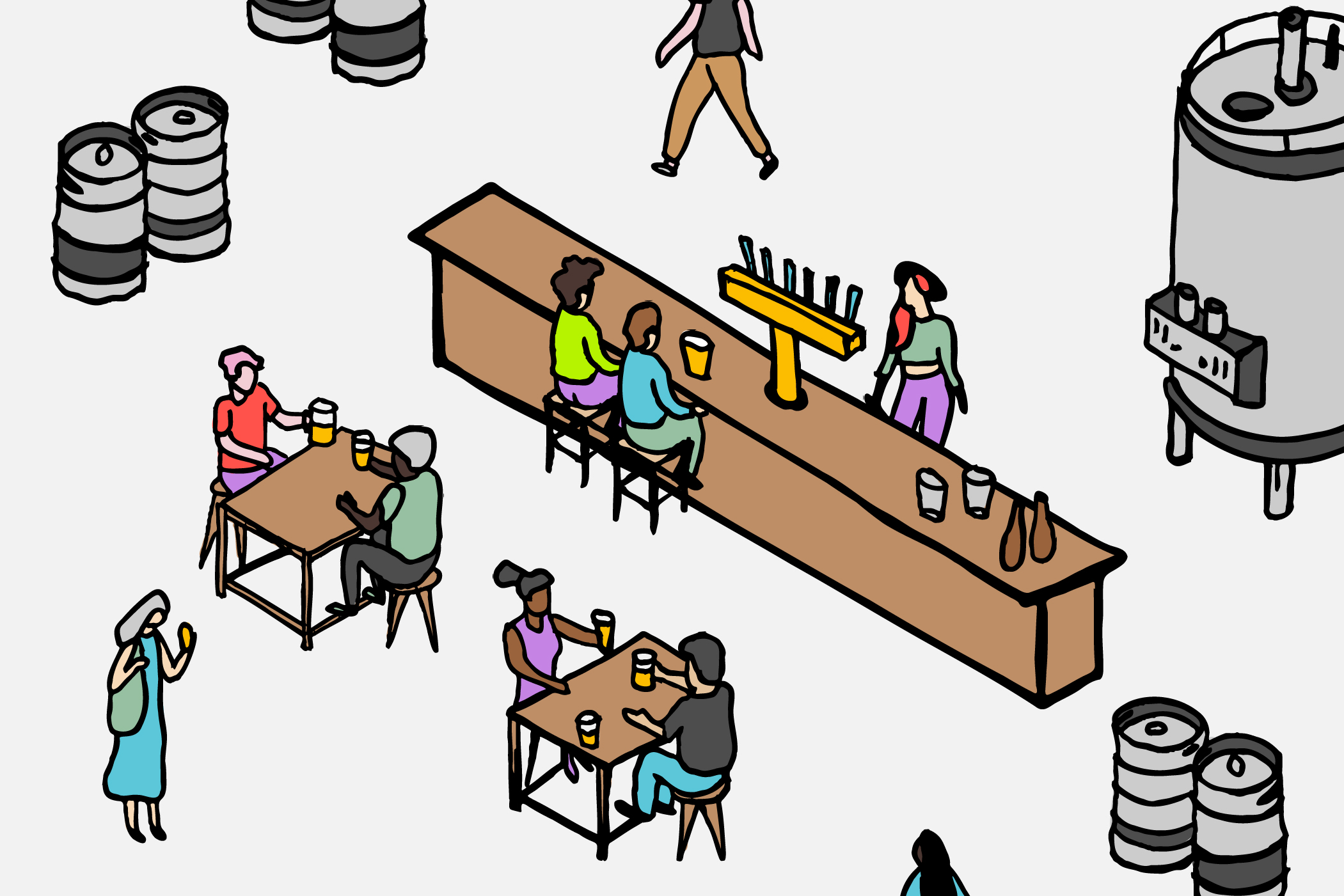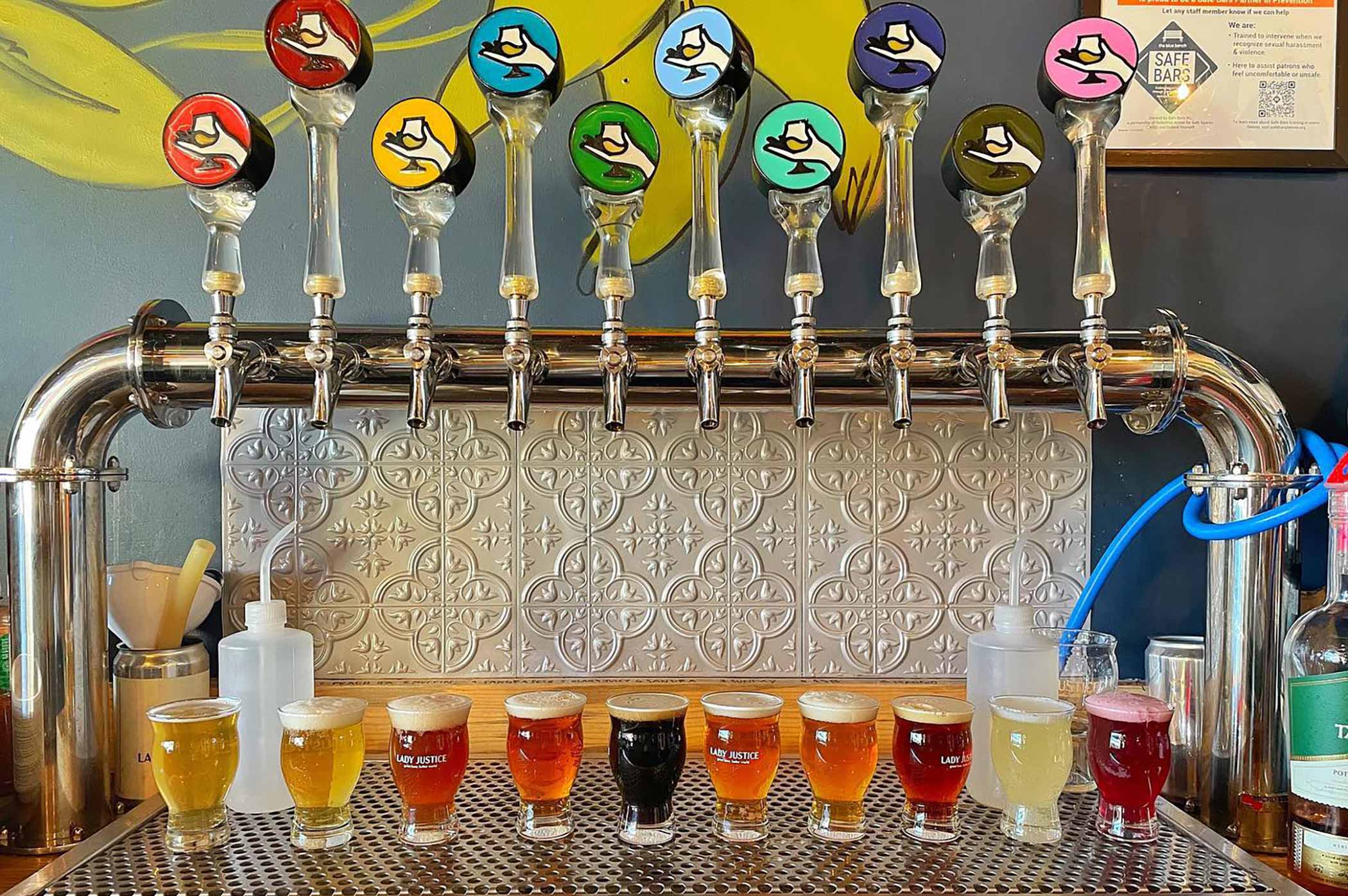Shop
Creating Safer Spaces in Craft Beer, Part One — Why Isn’t Craft Beer More Diverse?
Part one of ten.
“Creating Safer Spaces in Craft Beer” is an in-depth, ten-part series examining why it’s important to embrace diversity, equity, and inclusion in craft beer. Every Monday for the next ten weeks, we’ll be releasing a new part to the series.
Catch Up on the Series:
Creating Safer Spaces in Beer, Part Two — What Does a Safe Space Look Like?
Creating Safer Spaces in Beer, Part Three — Does Every Brewery Need a Code of Conduct?
In April of 2023, Hop Culture posted the following message to its Instagram page:
Grace here, Managing Editor of Hop Culture. As a Queer-identifying person in the industry, I’m always searching for more Queer-owned, Queer-led, and Queer-supporting breweries to feature that make incredible beer and create safe spaces for everyone to drink. For that reason, we started putting together our own list.
We’re featuring 40+ and counting, so hit the link in the bio to read them all ????
And then we want to hear from you. We’re sure there are breweries out there we don’t know about, and we want to find them!
So read the story, then hit us up in the comments: What Queer breweries should we add to our list? Which ones do we need to know about? What makes them amazing?
Tell us below ????????????
In the aftermath of this post, we received overwhelmingly positive comments. But inevitably, as happens anytime we write something that includes underrepresented communities in beer, we also received other, less supportive comments For example:
Beer is beer why does the alphabet mafia try to ruin everything???? No1 gives a shit about ur sexual interest or life Interesting how they know what a “women” is tho..
No one cares about q stuff…get over it. People just want good beer. Don’t care where it comes from…Hey Einstein, I don’t follow the page for q beer crap. Just follow it for beer. why is sexual identity so important with you people. Just put out a good product without the social justice crap. hard to comprehend??
Frankly, it is hard for us to comprehend.
And we’re going to tell you why.
Everybody should have an equal opportunity to enjoy beer. And right now, not everyone does.
Undeniably, the craft beer industry has catered to one specific demographic for many years. Intentionally or not, this culture dominated by white cis-men has created an environment with barriers to pretty much any marginalized or underrepresented community—women, Queer folx, BIPOC, Latine, Indigenous, South Asian, AAPI, and more.
Remember in high school, when you walked into the cafeteria at lunchtime? Like us, you probably sat with people who looked like you, because that was comfortable. When one doesn’t see people who look like them sitting at a given table, it’s often easier to find another table where they don’t have to face the risk of social awkwardness–or even harassment or violence.
Now, imagine going into a cafeteria where no one looked like you. If that happened, where would you sit?
This same dynamic makes it easier and more comfortable for straight white cis-men to succeed in the beer industry. Historically, this has meant the cis-male white community had easier access to capital to open breweries, and an easier time getting similar people to come try their beer. Just like the cafeteria, white men felt “comfortable” hanging out in a taproom where other people looked like them.
But for the past few years, those with the tiniest voices in craft beer have been shouting the loudest, carving out their own spaces where all are welcome. Where people look like them, and where–even if someone doesn’t look like them–everyone is free to meet, drink, and exchange ideas without fear of judgment or harassment.
As a rising tide lifts all boats, more and more breweries have implemented initiatives to create safer environments for their consumers. This includes bigger ones in the national spotlight, as well as smaller breweries focused on impact in their local communities.
While we won’t go so far as to say a wave has swept through the industry, the current has shifted. And little by little, day after day, the tides are changing.
Why Isn’t Craft Beer More Diverse?
Photography courtesy of (clockwise from top left): Sierra Nevada Brewing Company, Edible Brooklyn, New Belgium Brewery, and Bell’s Brewery
If I asked you to name some of the pioneers of craft beer, you’d probably list Ken Grossman, Jim Koch, Sam Calagione, Larry Bell, and Rob Tod.
And you’d be right. We highlighted many of the breweries these men created as some of the most iconic in America. But that itself reflects a systemic dilemma.
“Craft has been impacted by the consequences of being a homogenous culture,” says former New Belgium Director of Diversity, Equity, and Inclusion Courtney Simmons*. “It’s not unusual for smaller organizations, start-ups, and entrepreneurs to rely on developing relationships in their known networks, which leads to this homogeneity.”
In other words, craft beer naturally evolved into a homogenous culture because many of those early pioneers all looked the same.
In a documentary from Director Aaron Hosé called One Pint at a Time that specifically chronicles the Black experience in craft beer, Craft x EDU Executive Director Dr. J Jackson-Beckham explains that, “Those initial years in the 60s and 70s what you had there was a time when people are taking a lot of risk. That risk, in particular, is what has become the center of these narratives around the people who blazed the trail back then. I call them our founding fathers.”
She continues. “Those stories provide the recognition those folks deserve, but they also perform a lot of cultural work. One of the cultural effects of this narrative has been to gloss over the amount of resources that you needed to be able to take those risks…One of the unfortunate consequences of craft beer is that there is an almost anyone-can-do-it-if-they-want-to idea that has been embedded in this narrative, and that’s simply not true.”
Jackson-Beckham explains that for someone from an underrepresented community it would have taken an exceptional person with a whole lot of luck to find the means and access to capital to start a brewery.
For that reason, as craft beer exploded through the 1980s, 1990s, and early 2000s, the breweries opening up were by far and away owned by one specific demographic, attracting, in turn, a similar-looking cadre of drinkers.
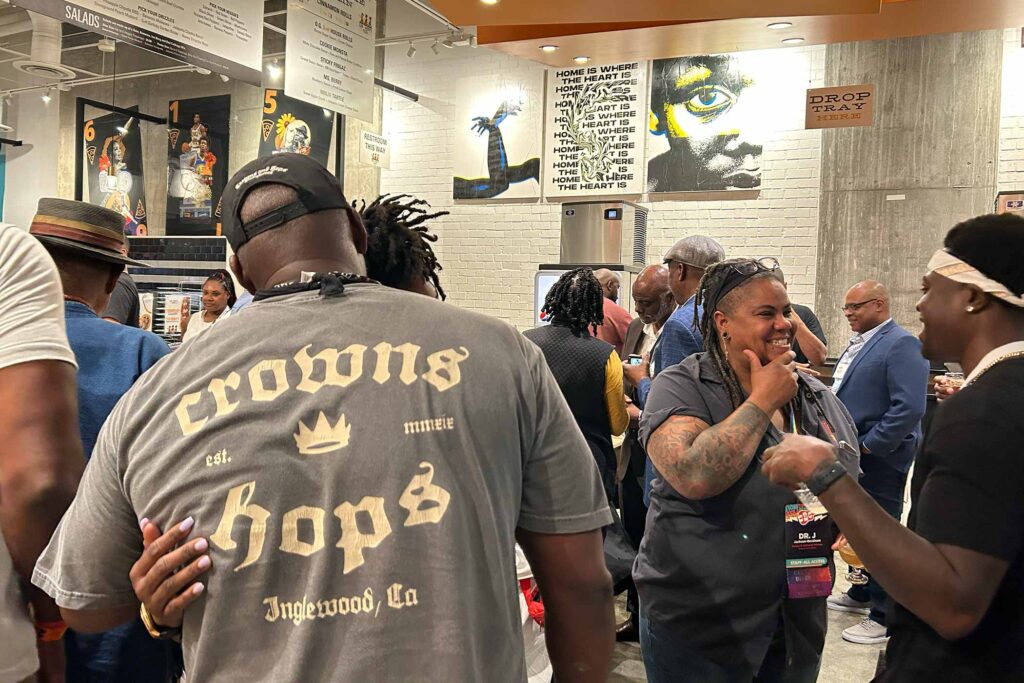
The first-ever bottle share hosted by the newly formed National Black Brewers Association | Photography courtesy of Grace Weitz
“When you look at the beer or craft beer segment there isn’t much diversity,” says Kevin Asato, a thirty-year beverage industry veteran who recently became the Executive Director of the first-of-its-kind National Black Brewers Association. “You have to ask the question: why? It doesn’t take much uncovering to realize that some of the opportunities and systemic challenges that have applied to Black people…as a whole are absolutely relevant here in the beer industry.”
This phenomenon has compounding effects. After four decades of an industry dominated by people who all look the same, many underrepresented communities were left behind.
“The lack of diversity, a big number of people in the industry might not occur to them because if you’re not Black or Brown in this industry you don’t feel alone,” says Huston Lett, co-owner and brewmaster at Bastet Brewing, in One Pint at a Time.
Have you ever walked into a taproom and literally been questioned about why you’re there?
Imagine traveling to another country where you don’t speak the language; how would you feel? Nervous? Uncomfortable? Out of place?
Probably all three.
“When I first got into the craft beer scene as a consumer there were not a lot of People of Color drinking. The lack of diversity was ridiculous. In the beginning, I didn’t feel so welcome,” says Lett, noting it took him four or five years of applying to find a job in craft beer.
For any underrepresented community, that’s how it can feel to live, work, and breathe in this industry daily.
“When you look at a systemic problem like the lack of diversity in the brewing industry, you don’t go from 2,000 breweries to 10,000 breweries in 10 years and 95% of brewers are white men,” says Trace Brewing Co-Founder Dave Kushner. “There is something inherent in the system that is creating this lack of diversity.”
But embracing a multitude of backgrounds and experiences brings new perspectives, flavors, and benefits to craft beer.
*Editor’s Note: While putting together this piece Simmons left New Belgium to start her own DEI Consultancy and refocus on her work with Equality Michigan. Chief ESG Officer Katie Wallace will be stepping in during the interim to continue running the DEI team at New Belgium.
The Benefits of Diversity on Craft Beer
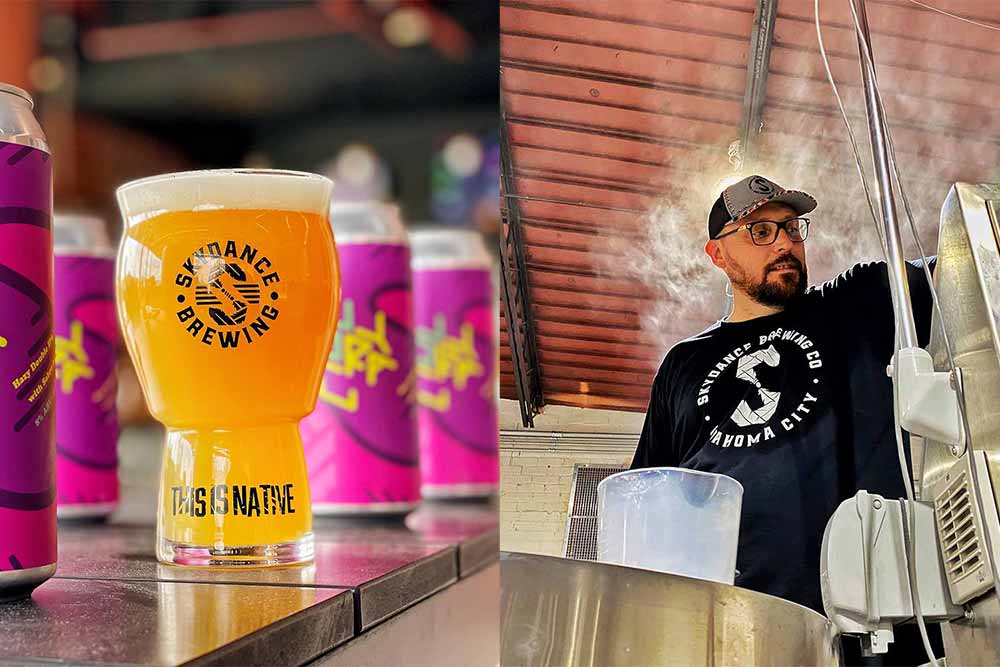
Photography courtesy of Skydance Brewing

Photography courtesy of Skydance Brewing
To us, creating safer spaces in beer and bringing all voices to the table improves the liquid in everyone’s glass.
For instance, someone like Jake Keyes, a member of the Ioway (or Iowa) tribe, who founded Skydance Brewing in Oklahoma City, OK, will have a different perspective on brewing than Tej Sandhu, a second-generation Punjabi who opened MERIT Brewing as a nod to his grandfather’s journey from a small village in India called Dhada to Canada.
And, both Keyes and Sandhu will both have a different perspective than Steven Tang, who started the AAPI-owned Drunk Fruit with three of his friends, focusing exclusively on bringing Asian ingredients into American drinking culture.
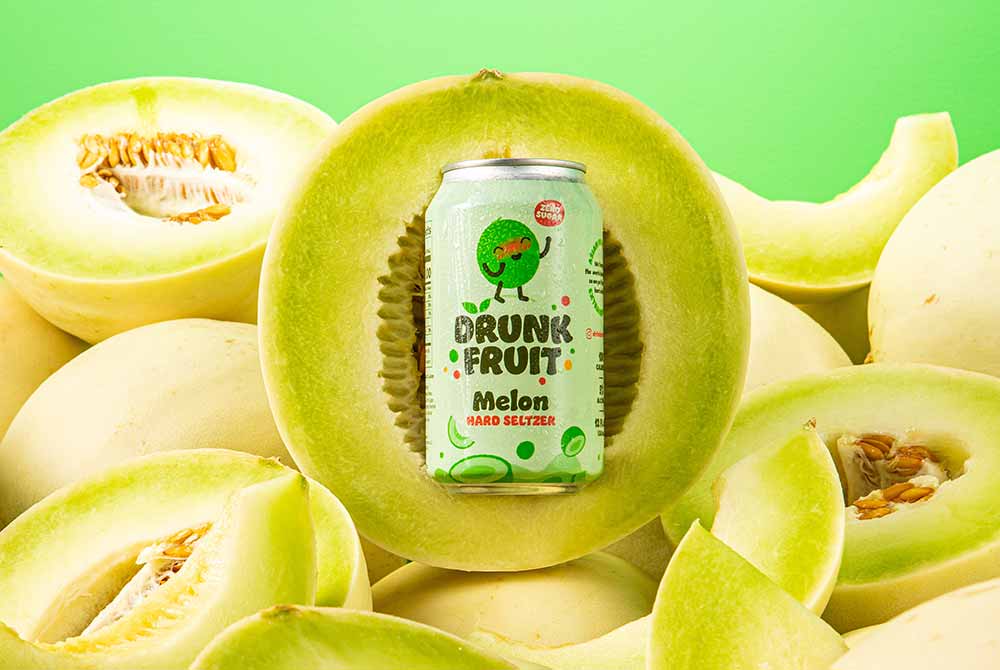
Photography courtesy of Max Milla | Drunk Fruit
“Alcohol for us has always been a way to bring people together and a very important part of the social fabric in the U.S,” says Tang in a previous story for Hop Culture. “People are engaging with and trying these flavors for the first time through hard seltzer…this makes our culture normal and cool through the drinking culture of the U.S. It’s a way to get ourselves out there as an Asian American population.”
Everyone has a story to tell, and the uniqueness of each story often finds its way into the glass.
“We’re trying to educate non-Natives more about who we are and what we’re capable of through the brewery, our beer names, and our branding,” said Keyes told Hop Culture.
Likewise, Sandhu shared with Hop Culture, “We’re called MERIT because some people came over from another country and wanted to contribute, and we’re going to honor that, and we’re going to honor that through beer.”
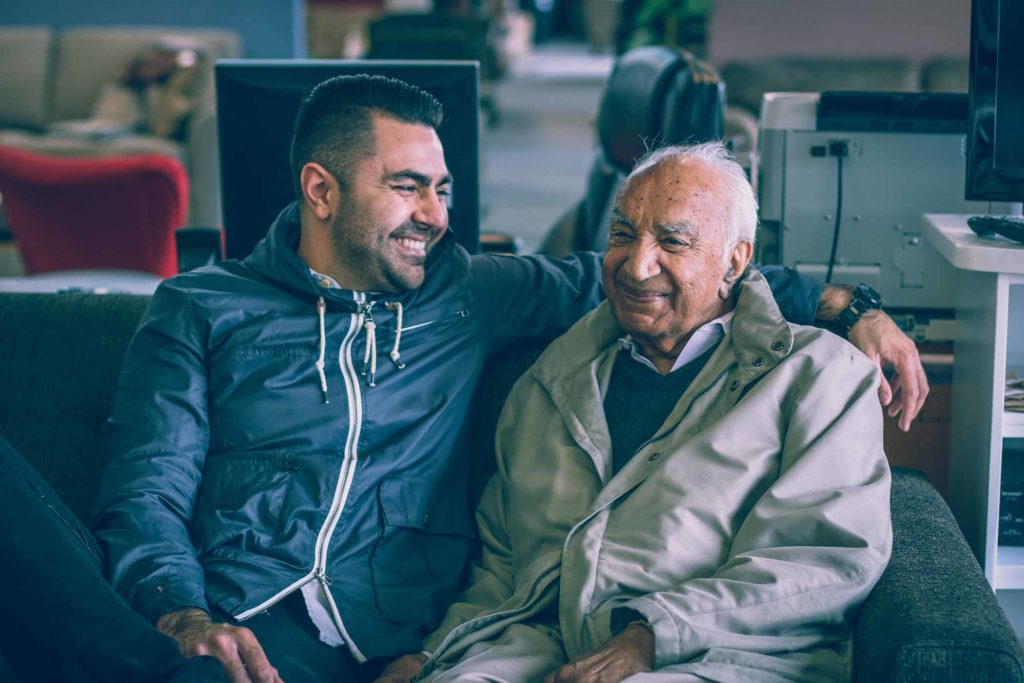
Photography courtesy of MERIT Brewing
These are the kinds of stories that Hop Culture wants to share because they’re complex, layered, and often the ones that go untold.
Yes, we’re challenging the status quo. And while we understand that’s scary, it’s time.
Because whether you like it or not (or even care), if you think you “just drink beer,” you are a part of the problem.
In reality, anyone, regardless of their sexuality, skin color, gender identity, ability, religion, or more, should have a safe space to drink craft beer.
We should all be asking ourselves: What can we do to make a difference?
For the last three years, some breweries have started to give us answers.
Up next on Monday 6/19: Creating Safer Spaces in Craft Beer, Part Two — What Does a Safe Space Look Like?

